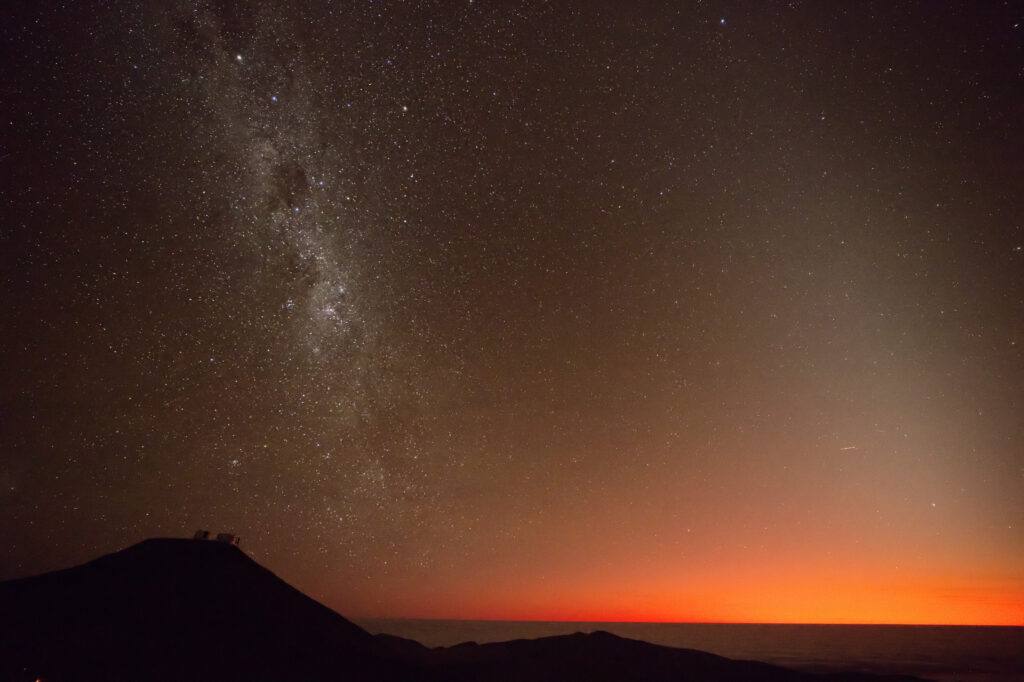The presented image was taken on the territory of the Paranal Observatory in Chile. In its right part, you can see the Milky Way and the silhouettes of the towers of the ESO’s Very Large Telescope complex installed on the mountain.

But still, the most remarkable part of the picture is the blood-red glow in the part of the horizon where the Sun is supposed to rise. You can pay attention to how saturated the colors are. This color palette has an explanation. In the fiery sky above Paranal, the dust left over from the eruption of the Hunga volcano is visible.
The eruption of the Hunga volcano occurred in January 2022. It has become the most powerful such event in the XXI century. The eruption led to the formation of a tsunami that covered a number of Pacific states. And the height of the raised column of ash and gas reached 57 km.
The image on the territory of the Paranal Observatory was taken six months after the eruption of Hunga. Despite such a significant time interval, there was still a significant amount of volcanic dust in the atmosphere. It diffuses sunlight, giving very rich colors to sunrises and sunsets. A similar effect (only on a much larger scale) was observed around the world after the eruption of Krakatoa in 1883. According to representatives of the Paranal Observatory, even a year after the eruption of the Hunga volcano, the sky above it still has not returned to its usual state.
You can also read about how the eruption of the Hunga volcano affected the Earth’s ionosphere.
According to https://www.eso.org
Follow us on Twitter to get the most interesting space news in time
https://twitter.com/ust_magazine

